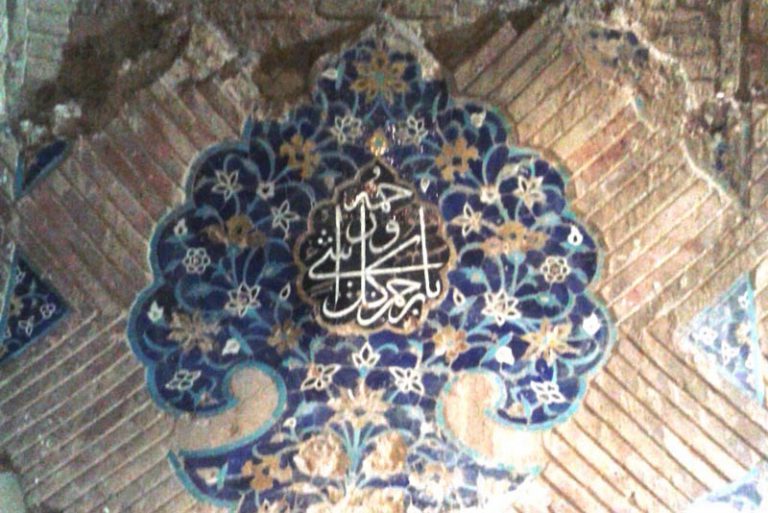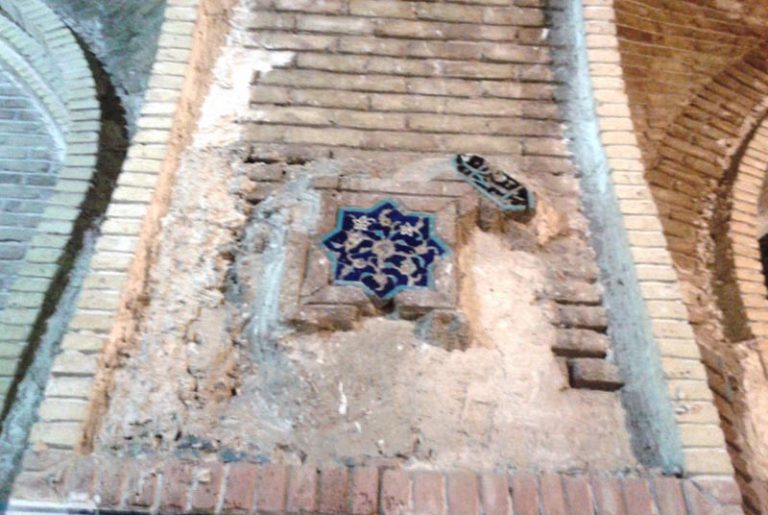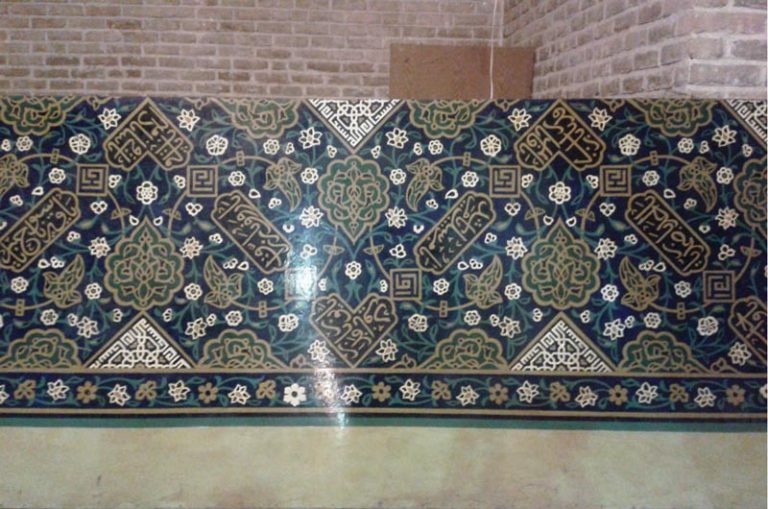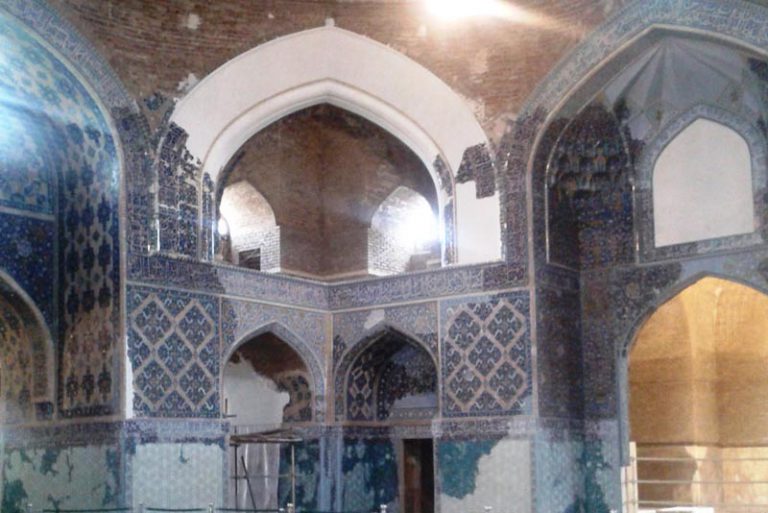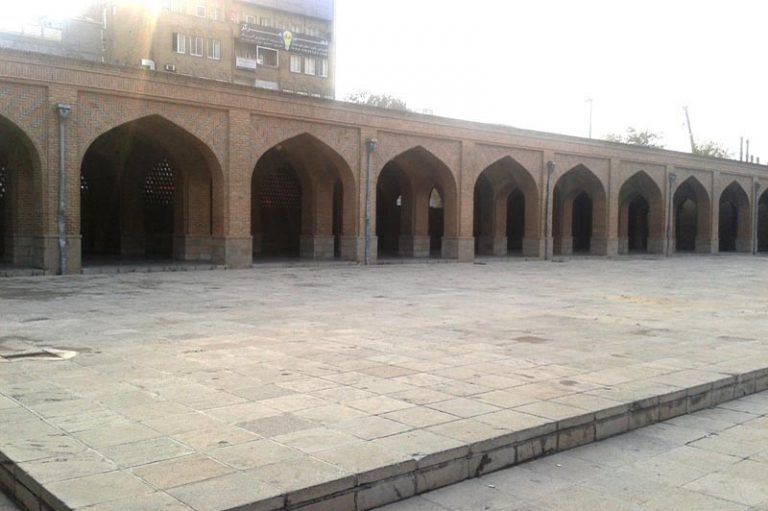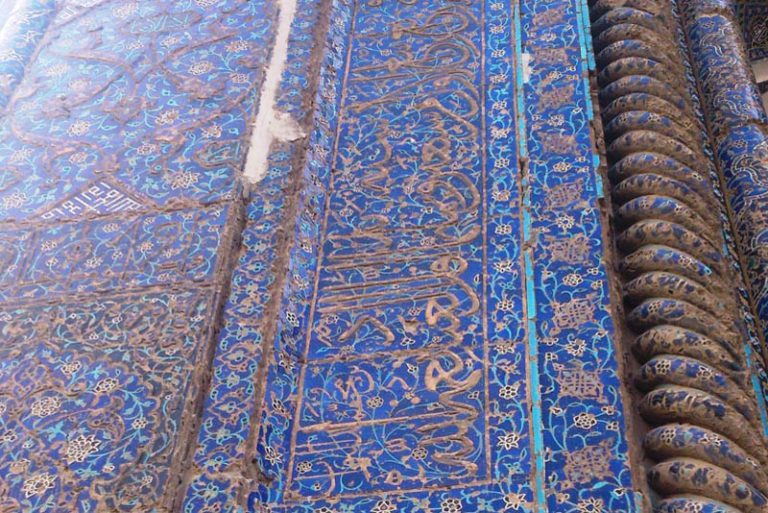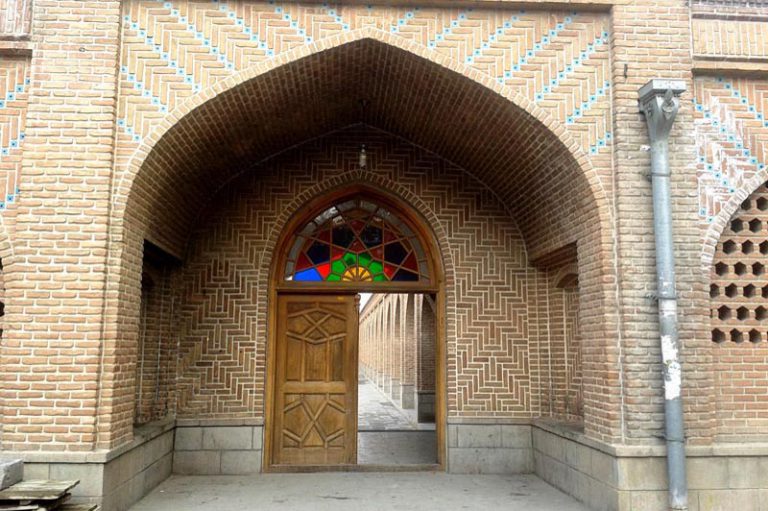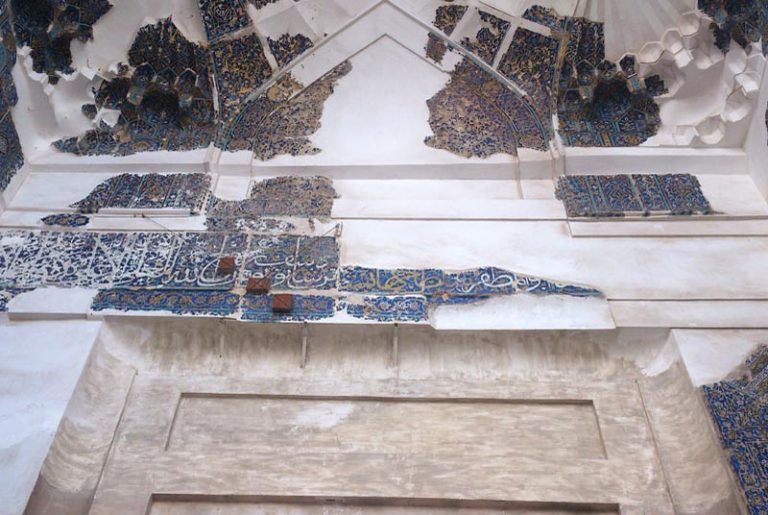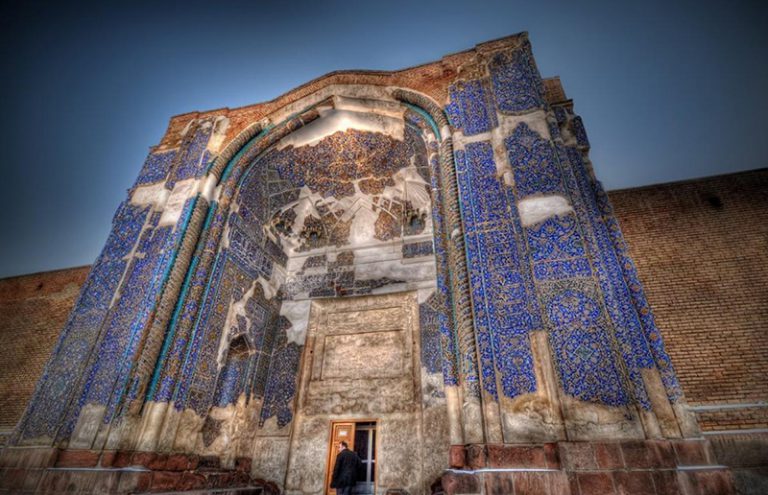Kabud Mosque is one of the historical monuments of Tabriz. It belongs to the Timurid period. During the rule of Jahanshah, ruler of Qara Qoyunlu, the city of Tabriz was the capital of Iran. The building was built upon the order of Saleheh, daughter of Jahanshah. According to the inscription above the door, the construction has been completed in the year 1465.
Jahanshah was one of the most famous men in science and literature who began his reign in 1435 and was killed in the year 1467 by Uzun Hasan from the tribe of Aq Qoyunlu. The building has been erected as a memorial to the victories of Jahanshah.
The etymology of Kabud Mosque
The mosque was known as the Mozaffariyeh Mansion (from the root word of Zafar means victory) in the past which can be seen in the arcade of entrance; this name was selected due to many victories and conquests of Jahanshah.
Another name of the building is “Turquoise of Islam” which is due to the colour of its exterior and interior Faience mosaics.
Kabud mosque is another name of the building that was chosen due to the use of tiles in azure and blue. The mosque is also called Jahanshah Mosque because it was built at the time of Abu al-Muzaffar Jahanshah.
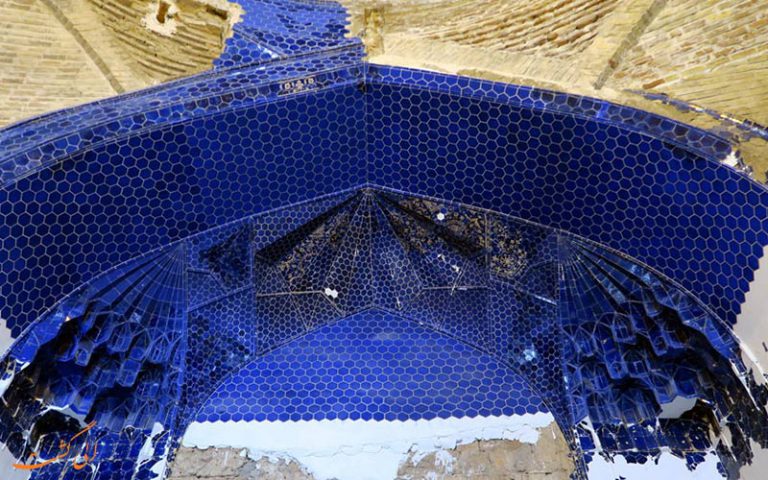
Kabud mosque in the course of history
The building has suffered irreparable damage during the past centuries due to various factors. These factors include: withdrawal of Tabriz from the center of power and trade, after that the mosques of the city were forgotten and the headquarters of the government were transferred to Qazvin and then to Isfahan, and the craftsmen had been forced to migrate to Isfahan.
Another major factor was the severe earthquake of 1780, which destroyed every part of the mosque except entrance and several parts.
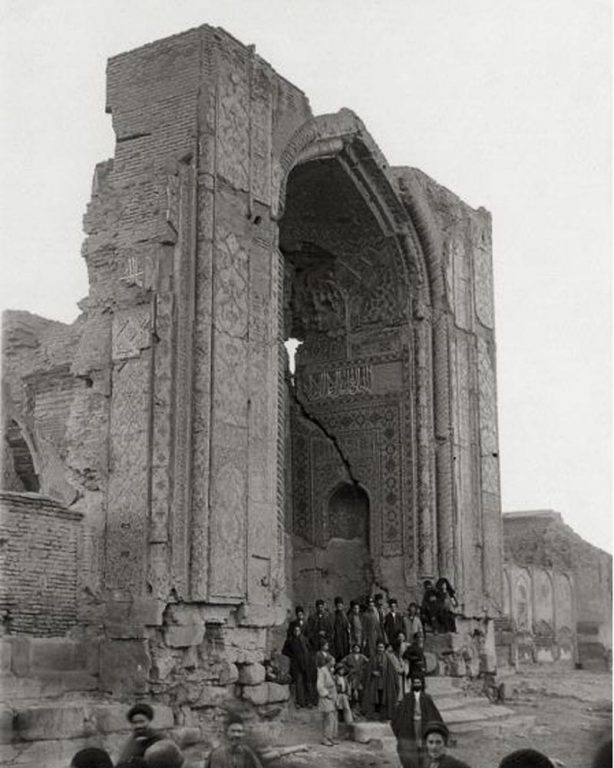
The architecture of Kabud Mosque
The mosque is one of the most famous mosques in Iran that was built in Azeri style.
The building unlike most of the mosques doesn’t have a central courtyard. It has a vault which surrounded by naves. The primary altar had been destroyed.
Due to the cold weather of Tabriz, the mosque is one of the covered mosques in Iran. Its entrance is like the Mongol and Timurid mosques and is ahead of the surrounding walls. The building level is 5 steps high from the main alley.
The large nave has a double-dome. It previously had 9 domes on different parts of the building and other adjoining buildings have been added to it, due to the occurrence of several earthquakes and lack of attention, many parts of it were destroyed and today none of them remains.
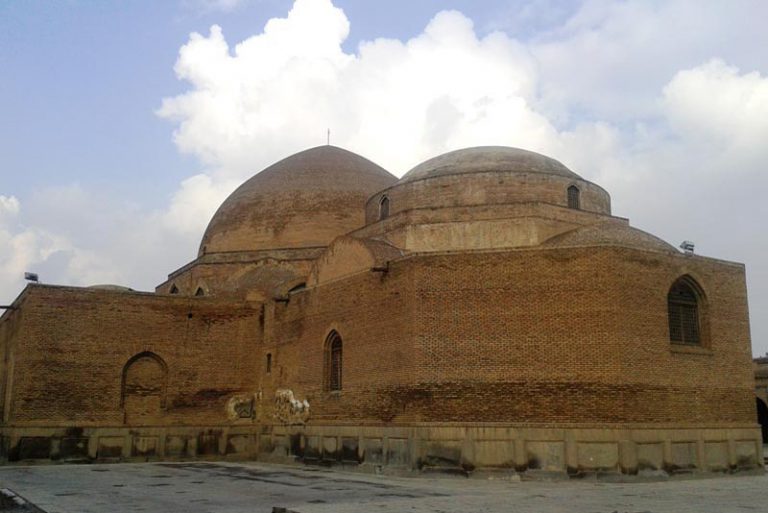
The decoration of Kabud mosque
The main character and reputation of the mosque are the Faience mosaics and the combination of brick and tile. Madam Dieulafoy, a French archeologist, who traveled to Iran, wrote in his travelogue that the tile work of mosque is more excellent than the tile work of Safavid Mosques in Isfahan or Goharshad mosque in Mashhad.
There is a glorious inscription written that: “the Mansion of Mozafariyeh”. There has been also written the name of Nematollah bin Mohammad al-bavab, the calligrapher and probably designer of the paintings, which is one of the most prominent Azerbaijan calligraphers.
In the kabud mosque, we can see only two cases of Persian words: one of them is a bit of poetry on Faience mosaic in sols calligraphy and black text with a golden border that located behind the entrance door overlooking the large nave. The other one is located in the southern part of the arch in nave which is written Ezzedin Gapouchi ibn Malek with Nastaliq calligraphy.
The small nave is located on the south side of the building, decorated with marble pieces and Quranic verses in sols calligraphy. The tiles in this part of the building have been worked in azure colours and mainly from Hexagonal pieces of different sizes. The entire surface of the ceiling is painted by gold.
Kabud mosque was registered in the National Heritage of Iran on 6 January 1932.
